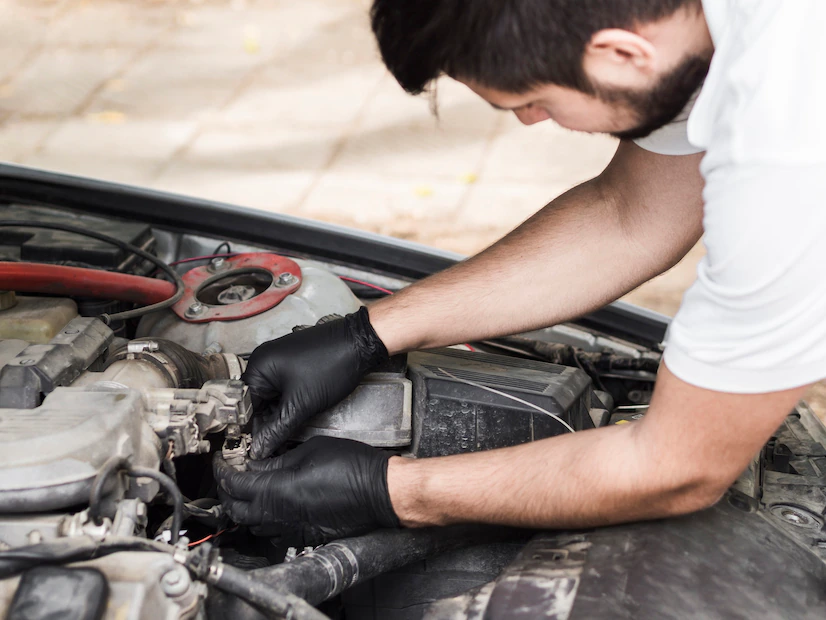The catalytic converter is an important part of the car that turns the pollutants made from the car into a harmless gas. The converter can take many harmful things like platinum, palladium, and rhodium and then turn them into different gases.
While you might not think about this simple part of your car, it’s actually a target for thieves because they can sell it for a large amount of money. If you no longer need your catalytic converter for any reason, Core Masters buys catalytic converters.
This guide will cover how to prevent catalytic converter theft as well as explain how to know if your converter has been stolen.
How Do I Know If My Catalytic Converter Has Been Stolen?
Most of the time, you cannot tell your converter was stolen just by looking at your car. You will probably be able to tell once you start the engine though as the car might make weird noises. When the converter has been removed from the car, the vehicle makes a constant loud roaring noise that becomes louder as you push on the gas pedal.
If you drive the car, you will notice it cannot drive smoothly and it will make a weird sputtering noise.
Here are some of the other things you can look for when it comes to driving without your converter:
- Loud roar as you start the car that becomes louder the more you accelerate
- More exhaust fumes than usual and weird exhaust smells
- You notice there are missing parts under the car especially the ones that lead to the muffler
- Acceleration that is sputtering or uneven
- The check engine light is on or your car fails an engine inspection
Read Also: Simplify Parts Pricing With A Comprehensive Solution
Why Do People Steal Catalytic Converters?
There are many reasons why people choose to steal catalytic converters. While sometimes you can only get $50 for a converter, there are some that can be sold for thousands of dollars per ounce thanks to the precious metals that are found in them.
People that are used to stealing converters can take them in just a few minutes making them easy to steal and get away. It’s an easy way to make quick cash for some people so they take every opportunity they can to ensure they take them.
Catalytic Converters also cannot be tracked like other parts of the car. So people that steal it easily get away with it and the person who’s now missing it from their car has no way of getting it back.
Are Certain Cars Targeted For Catalytic Converter Theft?
Any car that is made after 1974 has a converter so there are many cars out on the road that thieves can target. Most of the time, thieves prefer to steal from taller cars like SUVs and trucks because they can easily go under the car and take the converter.
Hybrid cars are also another target because the converters are made with more metal and more precious metals which means they can get a higher value for them when selling. The more precious metals there are in the converter, the more money the thief can get for it so they often go for cars they know that have converters best for selling.
Ways To Protect Your Car Against Catalytic Converter Theft
Worried about your car’s catalytic converter being stolen? There are plenty of ways you can ensure this doesn’t happen. Most are simple tricks that can be done for free.
Know If You’re A Target
As stated before, SUVs, trucks, and hybrid cars are all easy targets for catalytic converter theft. If you own one of these cars, you need to ensure you always follow all safety tips because you know your car’s converter can be stolen easier.
Knowing that your target makes it easier to keep yourself safe and be aware of the signs that your converter has been stolen.
Put Your VIN On The Converter
There is no way to track a catalytic converter, so if yours is stolen it’s almost impossible to retrieve it back. This is why some people choose to put their VIN or their license plate number on their converter.
This way if someone goes to sell it, the person buying it might check if the person trying to sell it to them is the original owner. If they are not, they can contact authorities and say they think the converter has been stolen.
Park In Well Lit Areas
Every time you park your car or go somewhere, make sure you park near the street lights. You should also try and park as close to the entrance of places as possible. If you park in an apartment complex, try to park in different areas every time so that people do not target your car as being in the same place.
Install Cameras
If you can, put cameras in your parking lot or outside your home. This allows people to know you have surveillance and they will be deterred from stealing the converter because they know they can be caught more easily.
You can also install motion sensor lights so that every time someone walks by, the light turns on. This makes people feel like they are being watched and they will not want to get too close to your car.
Paint Your Converter
This often deters buyers because it makes the converter less valuable. Painting is also known as a common technique for avoiding theft so if a person tries to sell a painted converter, it looks more suspicious. Some police departments even let you go into their station and paint your converter for free.
Catalytic Converters And Thieves
Unfortunately, converters are easy to steal making them an easy target for those looking to make a quick buck. When your converter is stolen, you can even spend up to $3000 replacing it. This is why it’s very important to use the tips in this guide to prevent your converter from being stolen.
You also need to ensure your car is insured against catalytic converter theft so that you are never stuck paying for a new out-of-pocket.
Read Also:






















